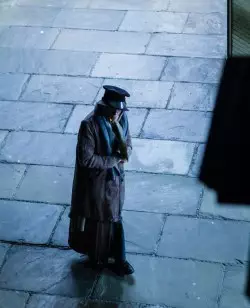
Believe it or not, in my regular line of work I write about markets a fair bit. Sadly, I write about the threat to the town’s once beating heart far more than I write about it being saved from the council’s axe-wielding bean-counters.
The times, as they say, have changed. One of my earliest memories is of zig-zagging through the maze of Blackpool’s South Shore market in the late 80s as my grandma bought kilos of unbranded cereal from huge drums. But by the late 90s, in my hometown of Congleton at least, the market was considered something of an embarrassment; its rows of stalls empty in the shadow of Safeway looming menacingly above.
Looking back, it was a sign of things to come. These days, I only venture into Kirkgate Market in an act of desperation. The last time I visited Leeds’ infamous trading landmark was in search of the lesser spotted 10W refrigerator bulb. And I still didn’t find one.
Generally speaking, I avoid Europe’s largest indoor market because I find it a stressful place to be. It’s huge and I’m yet to find a stall directory, and despite proclamations that the market industry is dying on its arse, Kirkgate always seems to be heaving to the point of claustrophobia. The smell of Meat Alley makes me want to gag and don’t even get me started on the shouting. Personally, I find being yelled at to buy a bag of bananas has the opposite effect.
So, it was with great relief that I was able to explore what I knew to be one of the city’s architectural and historical gems in the relative peace and quiet of a theatre production, as part of West Yorkshire Playhouse’s annual Transform festival.
‘The Market’ began in both darkness and silence, finally giving me chance to take in Kirkgate’s wonderful character, its ornate balcony and regal colours, the quaint, retro signage of stalls simply named ‘Whittaker’s Eggs’, ‘Martin’s Curtains’ and ‘Lyn’s Accessories’. Unfortunately it also revealed there’s still an unbelievable level of crap still being sold in markets, and to misquote Dion in Clueless, no-one buys cheap polyester hair any more.
As the play unfolded, a cast of story-tellers crept out of the gloom to tell the market’s history, including Linda the Button Lady, Michael the Master Butcher (who was fittingly hammy in his performance) and a woman who looked back with whimsy on the days she earned 75p a week to sell parachute-sized knickers. While I was unable to later confirm the existence of many of these characters, I was heartened to learn the legend of Woodbine Lizzie – whose role was to lament the passing of the ‘hustle and bustle’ while skanking for smokes – is actually based on fact.
The promenade style performance led the crowd from one part of the hall to the other, snaking up and down the passageways on a choreographed route which took us from one historical chapter to another. Events in the market’s history – such as the two fires which ravaged the city centre’s trading hub – and its narrow escape from destruction by a World War II bomb. When we clatter down the market’s paved passageways, it’s now with the knowledge that under our feet are the shells of air-raid shelters.
Finally, a trip into the market’s rafters allowed us to look out over the stalls and onto its winding corridors, where the performers revealed their last secrets in a cacophony of noise that captured the raucous nature of a market atmosphere, petering out to the sound of a lone opera singer’s haunting voice.
So sure, times have changed. But Kirkgate has a fighting history and with stories like that, maybe the future isn’t all doom and gloom after all.